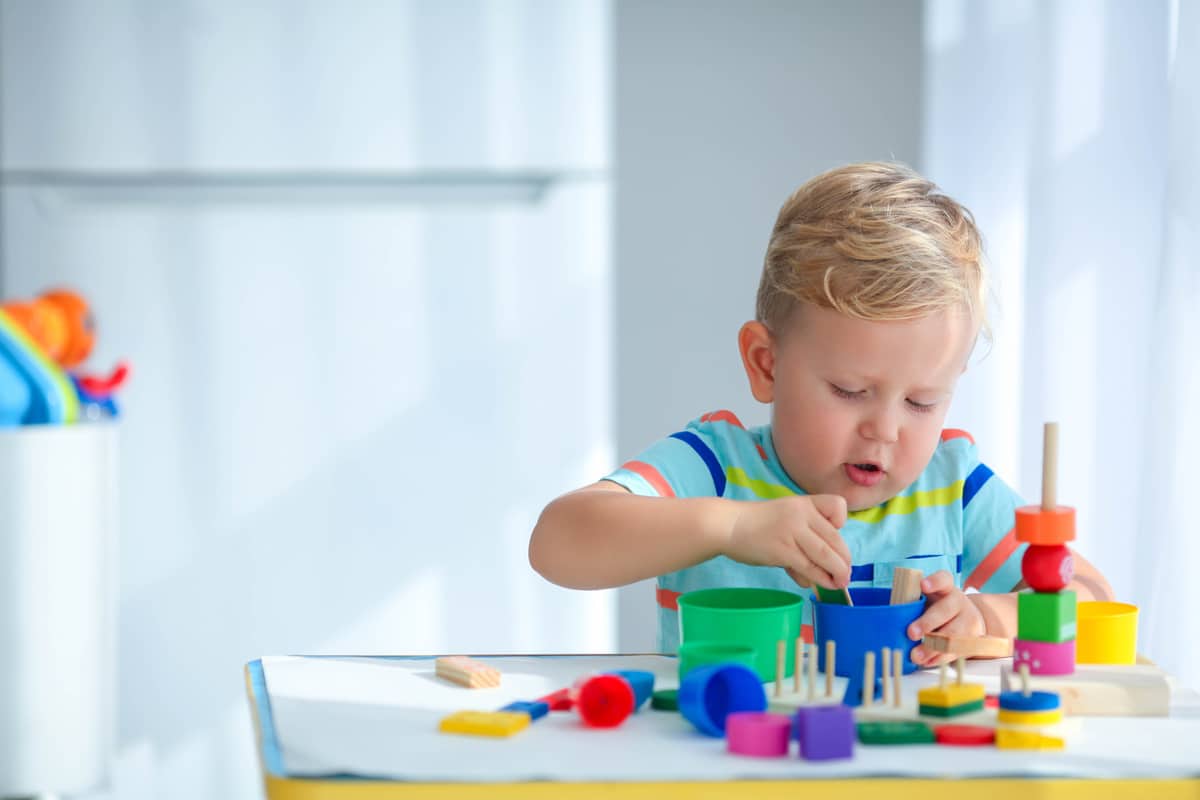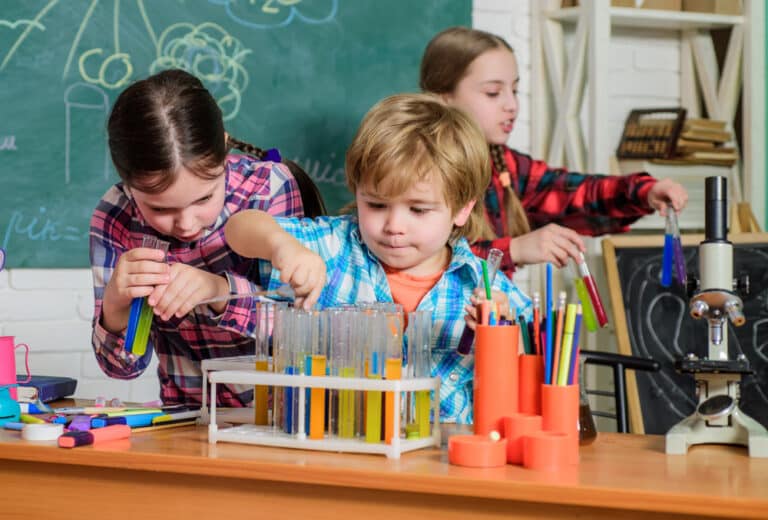Educational toys are a great way to stimulate your child’s learning and development. They provide hands-on experiences that enhance problem-solving skills, critical thinking abilities, and creativity. Choosing the perfect educational toy for your child can be overwhelming, with so many options available. In this guide, we will provide you with tips on how to select the best educational toys for your child. With the right educational toys, your child can have fun while learning and developing essential skills.
In This Article
- What are educational toys?
- Tips to choose the best educational toys for kids
- 1. Consider your kids’ interest and age:
- 2. Check for educational value
- 3. Consider toys that promote physical activity
- 4. Look for open-ended toys
- 5. Think of practical application
- 6. Choose toys that spark imagination
- 7. Ask how and why questions:
- 8. Don’t forget to have fun
- 9. Encourage collaborative play
- 10. Look toys that are made with durable materials
- 11. Don’t forget about Safety
- Why is toy selection important?
What are educational toys?
Educational toys are playthings designed with an educational purpose, aiming to stimulate learning and promote intellectual development in children. Toys can range from basic building blocks for toddlers to chemistry sets that allow older kids to explore scientific concepts.
Educational toys often cater to specific age groups and developmental stages. They are designed to be engaging and fun, ensuring that learning becomes an enjoyable process.
Examples of educational toys include puzzles, science kits, board games that require strategy, craft sets, books, construction sets, and interactive electronic toys.
Tips to choose the best educational toys for kids
As we said, educational toys are a great way to engage kids in fun and interactive learning activities. They not only keep them occupied but also help in developing their cognitive, motor, and social skills. Here are some tips to help you choose toys that are both fun and educational for your child:
1. Consider your kids’ interest and age:
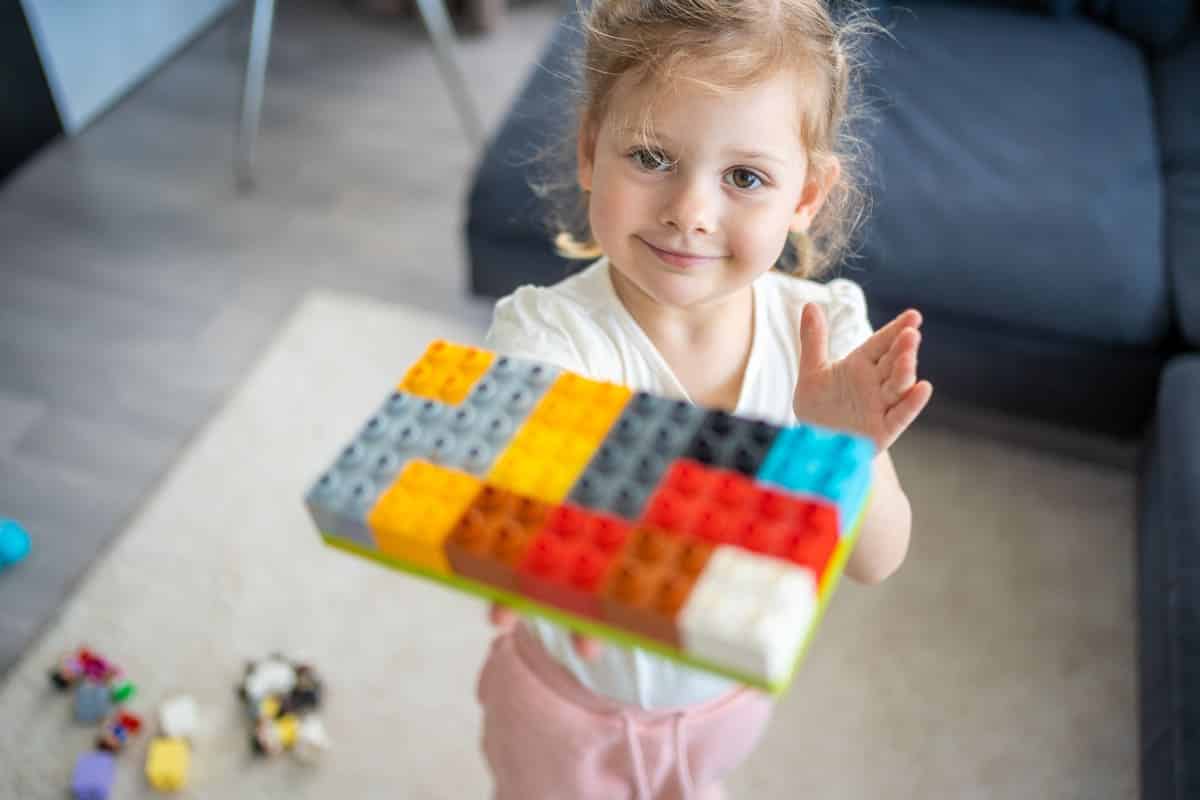
Choosing best educational toys for your kids should start with their interests and age group. For instance, if your child loves animals, consider buying them a puzzle or game related to animals. Similarly, if your child is in the preschool age group, opt for toys that focus on basic concepts like numbers and alphabets. However, age-appropriate, interest-specific toys will keep them engaged and promote learning. To do this,
- Observe what your child is most interested in.
- Look for toys that align with their interests.
- Check the recommended age range on the toy’s packaging.
2. Check for educational value
While all toys have some learning potential, certain toys are specifically designed to promote learning and development. These include puzzles, board games, musical instruments, and STEM (science, technology, engineering, and math) toys. These toys can help in developing problem-solving skills, hand-eye coordination, critical thinking, and more. To ensure that the toy has educational value,
- Look for toys with specific learning objectives or goals.
- Check if the toy promotes a certain skill or concept.
- Read reviews or ask for recommendations from other parents or educators.
3. Consider toys that promote physical activity
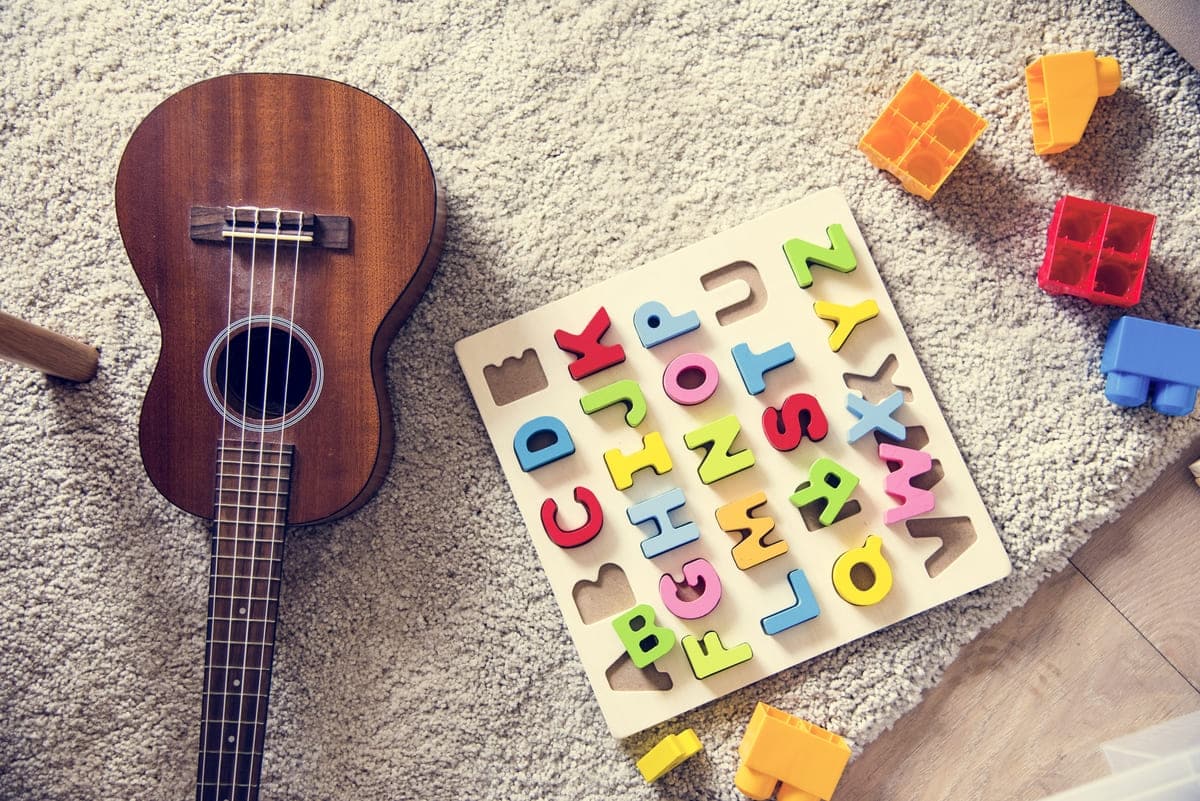
Physical activity is essential for children’s health and development, so consider incorporating educational toys that also encourage movement. These can include outdoor toys like skipping ropes and balls or indoor toys like mini trampolines and balance boards. Not only do these toys promote gross motor skills, but they also help in developing coordination and spatial awareness. During your child’s developmental stage, it’s important to encourage physical activity as part of their daily routine.
4. Look for open-ended toys
Open-ended toys are ones that can be used in multiple ways, promoting creativity and imagination in kids. These toys often have no set instructions or rules, allowing kids to use them freely and explore their limitless potential. Some examples of open-ended toys are building blocks, playdough, and art supplies. For your child’s development, it’s important to give them the freedom to experiment and create. To do this,
- Look for toys that can be used in various ways.
- Avoid toys with specific instructions or rules.
- Allow your child to use the toy in their own unique way.
5. Think of practical application
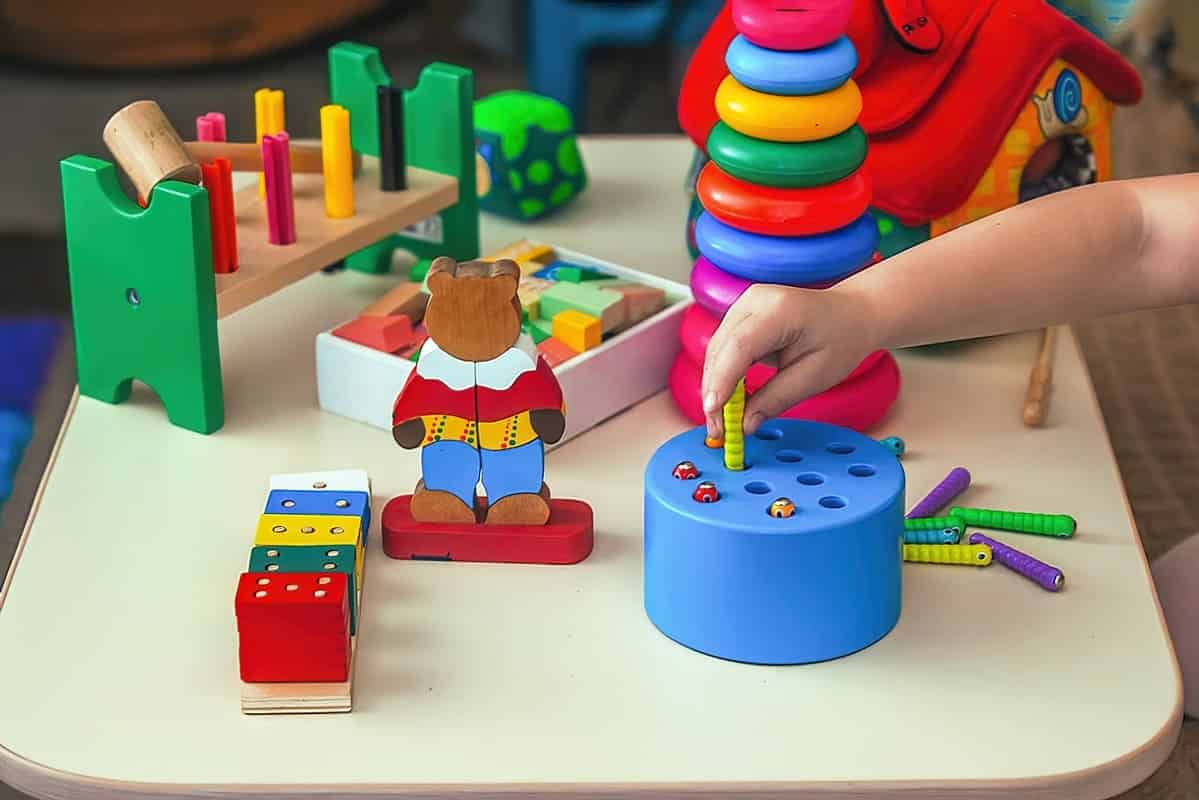
Apart from being fun and educational, it’s also beneficial to consider toys that can have a practical application in your child’s daily life. For instance, play kitchens or pretend food sets can help children learn about household chores or basic repairs while playing. Science experiment kits and coding games can introduce your child to real-world skills and concepts. Such toys not only teach valuable skills but also make learning more relatable and engaging for kids.
6. Choose toys that spark imagination
Imagination is a key aspect of childhood development, and choosing toys that encourage imagination is crucial. These can include dress-up costumes, pretend play sets, and storytelling props. When kids engage in imaginative play, they are able to express themselves creatively and develop their language skills. To foster imagination,
- Look for toys that allow for pretend play.
- Choose themed toys that encourage storytelling.
- Provide materials like paper and crayons for kids to express their ideas through drawing or writing.
7. Ask how and why questions:
Choosing the best toys is crucial for your child’s cognitive development, especially in fostering fine motor skills. These toys should excite your child’s curiosity, encouraging them to ask ‘how’ and ‘why’ questions. For instance, a toy that requires assembly could provoke questions like, “How does this part fit?” or “Why does it work this way?” Such queries stimulate critical thinking and problem-solving skills. Toys that promote counting skills, like number puzzles or abacuses, can enhance their mathematical abilities, while crafting kits or building blocks can improve fine motor skills. Always aim for toys that encourage exploration and learning.
8. Don’t forget to have fun
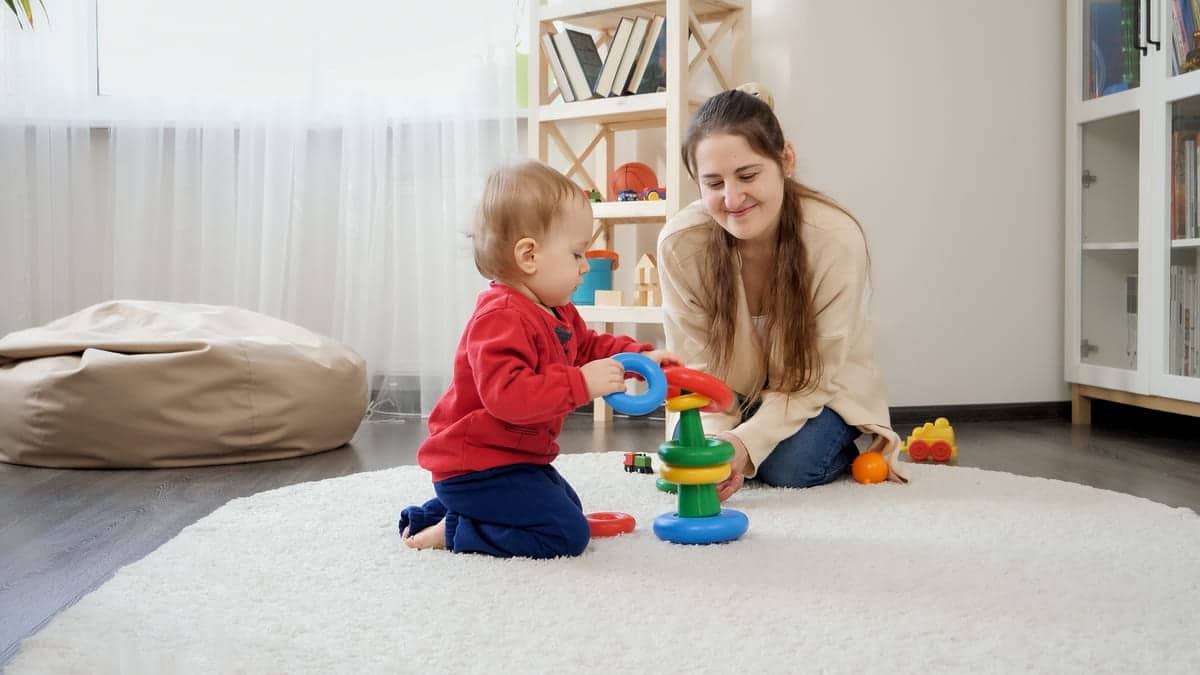
While the main purpose of educational toys is to promote learning and development, it’s also important to remember that they should be enjoyable for kids. Toys that are too complex or difficult may frustrate your child, so make sure to choose ones that are appropriate for their abilities. It’s okay to have a mix of educational and purely fun toys in your child’s playtime rotation. After all, play is an essential part of childhood and should be a source of joy and relaxation for children. So don’t forget to have fun along with your child as they learn and grow through play.
9. Encourage collaborative play
Collaborative play is when children engage in activities and games with others, promoting social skills and teamwork. Educational toys that encourage collaborative play can help children develop communication or literacy skills, problem-solving abilities, and empathy. Some examples of such toys are board games, puzzles, and building sets. However, versatile toys that can be played with individually or in a group are ideal for promoting both independent and social play. If your child’s interests lies in playing with others,
- Look for toys that require two or more players.
- Consider games that involve turn-taking and cooperation.
- Encourage your child to play with their siblings, friends, or classmates.
10. Look toys that are made with durable materials
Kids tend to be rough with their toys, so it’s important to choose ones that are made with durable and safe materials. Avoid toys that have small or sharp parts that can break off easily. Wooden toys are a popular choice as they are sturdy and can last for generations. However, plastic toys can also be durable; make sure they are made of non-toxic materials. For this;
- Read the toy’s packaging to check for warnings or safety recommendations.
- Avoid toys with small parts that can be swallowed or are sharp.
- Consider materials like wood or BPA-free plastic for durability and safety.
11. Don’t forget about Safety
When choosing educational toys for your child, safety should be a top priority. Look for toys that have passed safety standards. Check for small parts that may be a choking hazard, and avoid toys with sharp edges. To ensure safety,
- Read reviews from other parents.
- Look for safety certifications on the toy’s packaging.
- Regularly check for wear and tear on the toy.
- Supervise your child while playing with the toy.
Why is toy selection important?
Toy selection plays a crucial role in your child’s development for several reasons:
- Promotes Learning: Educational toys can help children grasp complex concepts more easily, aiding in cognitive development.
- Aids Skill Development: Different toys help develop different skills. For example, puzzles can enhance problem-solving abilities, while stacking blocks can improve fine motor skills.
- Encourages Creativity: Toys like art and craft sets can stimulate a child’s imagination and creativity.
- Boosts Social Skills: Games that require multiple players can teach children about teamwork, sharing, and cooperation.
- Enhances Emotional Development: Role-playing toys allow children to express their feelings and learn empathy.
- Provides Entertainment: Toys provide a fun way for children to spend their time, keeping them engaged and entertained.
- Improves Physical Health: Active toys like balls or bikes encourage physical activity, which is essential for a child’s overall health and well-being.
- Foster’s Independence: Some toys can help children learn how to do things on their own, fostering a sense of independence.
The Bottom Line
In conclusion, choosing the right educational toys for your child can have a significant impact on their development and growth. By considering these tips, you can select toys that will not only be fun for your child but also stimulate their learning and promote important skills. Remember to prioritize safety, consider practical applications, and foster imagination and physical activity in your child’s playtime. We hope this guide has been helpful in guiding you toward making informed choices when it comes to choosing toys for your child.

